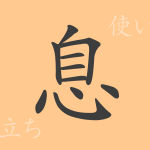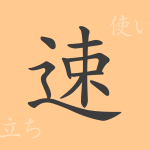Kanji characters are more than just symbols; they embody culture, history, and the evolution of language. The commonly used Kanji “(捉)” in Japan enriches our communication with its deep meanings and versatile uses. This article explores the origin of “(捉)”, its usage, idiomatic expressions, and proverbs, unraveling the fascinating charm of this Kanji.
Origin of “(捉)” (とら.える – Toraeru)
The Kanji “(捉)” can be traced back to ancient Chinese oracle bone script. It consists of the radical for “hand” (手) and the character representing “capture” or “seize” (足). Together, these components depict the action of “using hands to capture feet”, metaphorically evolving to mean “to capture” or “to grasp”.
Meaning and Usage of “(捉)” (とら.える – Toraeru)
“(捉)” primarily means “to seize”, “to capture”, or “to apprehend”. It is used not only in physical senses of grasping or capturing objects but also in abstract terms like understanding concepts or problems. Additionally, it signifies grasping the essence of things.
Readings, Stroke Count, and Radical of “(捉)” (とら.える – Toraeru)
Understanding the readings and structural components of the Kanji “(捉)” is crucial in its Japanese usage:
- Readings: On’yomi (音読み) ‘ソク’ (soku), Kun’yomi (訓読み) ‘とら.える’ (toraeru), ‘と.る’ (toru)
- Stroke Count: “(捉)” consists of 10 strokes.
- Radical: The radical for “(捉)” is “手” (tehen), which means “hand”.
Idioms and Proverbs Using “(捉)” (とら.える – Toraeru) and Their Meanings
Japanese includes many idiomatic expressions and proverbs incorporating “(捉)”, each demonstrating nuanced meanings and context-specific variations:
- 捉えどころのない (とらえどころのない): Indicates something elusive or hard to pinpoint.
- 捉え直す (とらえなおす): To reconsider or reevaluate one’s perspective or understanding.
- 捉縄 (そくじょう): A rope used to capture a criminal; can also refer to rules or customs that bind people.
Conclusion on “(捉)” (とら.える – Toraeru)
The Kanji “(捉)” enriches the Japanese language with both its form and meanings. From physical actions like “capturing” to abstract concepts of “grasping” thoughts or understanding, this Kanji is widely used across diverse contexts, enhancing the expressive power of Japanese. Moreover, idiomatic expressions and proverbs involving “(捉)” effectively convey nuances in everyday conversations and literary works, showcasing its versatility in communication.

























